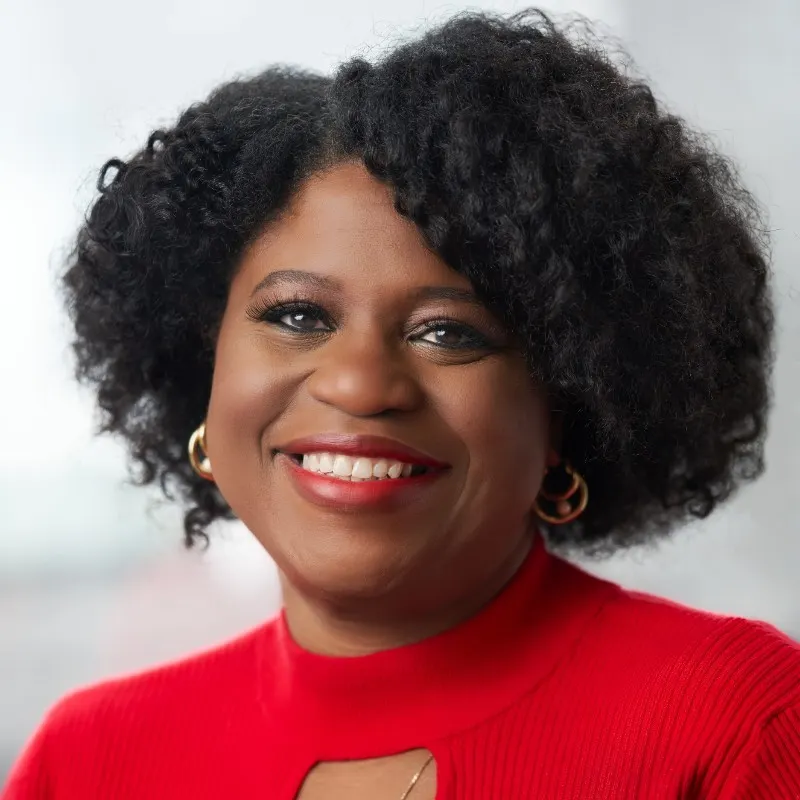The following is a guest post from Stacey Ryan-Cornelius, global CFO at Ogilvy. Opinions are the author’s own.
Finance leaders, particularly in creative industries, are often perceived as obstacles — number crunchers, bean counters, budget enforcers, the rainstorm of reality that crashes down on creativity’s wildest parades. Maybe it’s because I haven’t taken the traditional CFO path, or maybe it’s because I lean into what sets me apart, but the reality of my role couldn’t be further from this perception.
Of course, every good CFO knows the numbers must work. However, my experience across the creative industry has shown me that effective financial leadership requires more than analytical rigor — it requires a nuanced blend of science, art and soul. Here’s a look at how each of these has elements has taught me invaluable leadership lessons.
Science: Seeing the human behavior in the balance sheet
I’m certainly not alone in viewing financial leadership as a science. After all, our work is rooted in specific outcomes and KPIs, with measurable results that guide our overall performance. The science doesn’t end there because in my experience, numbers tell nuanced stories.
As CFO of a global company serving major clients, I bear the responsibility of safeguarding the financial health of over 10,000 employees and thousands of clients who rely on our stability. To fulfill that role effectively, I must go beyond technical skills to understand human behavior — cues that reveal insights about morale, anxiety, skepticism, vulnerabilities, momentum and more.

My growing interest in behavioral science (spurred by Ogilvy’s leading practice in the discipline) has deepened my belief that being an effective finance leader hinges on understanding the “why” behind people’s actions. This perspective helps me assess business cases with balance. My team makes decisions based off numbers while considering hidden agendas, underestimated timelines, costs and unforeseen complexities.
Ultimately, our work is a deeply human endeavor that demands more than a good grasp of numbers. A big part of my role is bringing people along on the journey. When we invest as a company, my job isn’t just to make the financial case, but the emotional one too. Building relationships and engaging in honest conversations on a human level ensures we stayed aligned with the right business objectives, giving us a clearer sense of how to problem-solve and communicate decisions with transparency.
While it’s impossible to please everyone, truly listening and considering diverse perspectives helps uncover common goals and drive collective success. Even when not everyone gets exactly what they want, you can cultivate belief in the vision. And that can hold a greater value than any ledger item.
Art: Bringing vision and conviction to shared goals
Art is deeply personal, both in creation and interpretation. Each work reflects the imagination, drive and emotions of its creator, making every artistic expression uniquely its own. Just as every work of art is one of a kind, so is the way each of us approaches leadership. I’ve learned that there is no one way.
Building on this idea, I’ve realized that embracing the artistry in my role has had a tangible impact on our business, perhaps no more apparent than in our client partnerships.
Ogilvy works with some of the biggest brands in the world, and when you have a client of that scale, financial leadership must extend beyond traditional finance. To ensure our relationship is truly valuable, I focus on the product we were creating for them and how it drives their growth. By immersing myself in the process — collaborating with our internal team and client stakeholders to shape their business positioning alongside the creative — I can gain a deeper understanding of the client’s needs. As a result, when it comes time to align on financial decisions, we were already in sync.
My experience working across our business and that of our clients reinforces another perspective many artists share: not everyone will see things the way you do. But true leadership, like great art, requires conviction. Over time, I’ve learned to stand firm in my vision while embracing feedback, engaging in tough discussions with an open mind, and staying focused on shared goals that drive progress.
Soul: Embracing self-validation in service to something greater
Most importantly, I believe the greatest asset I bring to my work is my soul, my fullest self. One of my mantras is, “Nobody in this world can be me.” That doesn’t mean I’m the best. It means that my self-belief fuels my confidence in making tough calls and bold decisions, even when others may not immediately see the vision.
As a Black woman, I know I am a rarity in my position. My uniqueness has been a strength, but it has also meant navigating challenges others haven’t faced and having to prove myself in different ways than others have. Inequities like these are unacceptable, yet they are a reality for many.
Perhaps because of this, I’ve struggled with impostor syndrome — the nagging sense that I don’t belong. Over time, I’ve learned to counter it through self-validation rather than seeking approval from others. This includes repeating the phrase, “I know the truth” to myself, a powerful reminder that helps me stay grounded when I waver. In fact, I have it as a plaque in my office as a constant reminder. This, along with my journal on “what went well” that I try to keep weekly, are key methods to manage the self-doubt.
This shift has made me stronger and, ultimately, a better leader, which is vital, as I don’t see my role just as a financial one, but as an emotional and personal responsibility. By leaning into my own sense of soul as a source of strength, I help set an example for others from any background, at any level. Demonstrating that differences aren’t roadblocks; they’re opportunities.
Reflecting on the science, art and soul of financial leadership in today’s world and I can see how central each has become to my leadership philosophy — and, in turn, my ability to drive impact on multiple levels. Finance, like any field, may come with set archetypes and adages, but that doesn’t make them they only way forward. By looking beyond the conventional boundaries of my discipline, I’ve learned that financial success lives as much in fostering a culture of innovation, collaboration and genuine human connection, as it does in the sustainable growth and lasting impact that results.





